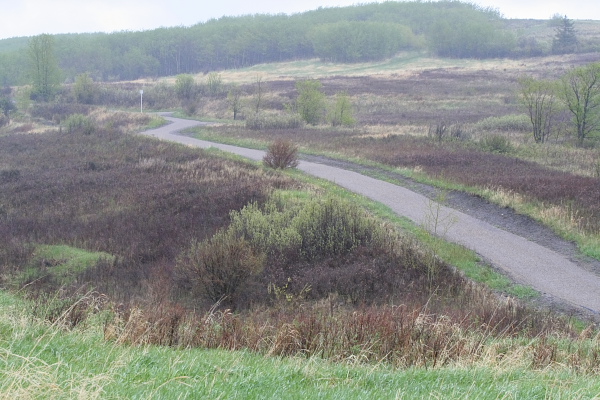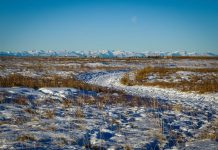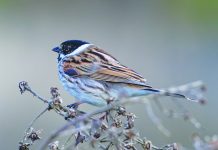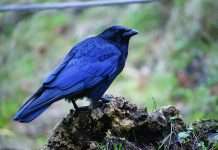Although bison once thrived on the prairies, their large herds roamed widely and didn’t return to locations for long periods of time. Their grazing patterns were intense but surprisingly less concentrated/damaging than the sustained use of the natural area by daily visitors to Nose Hill Park today.
The principal threat to prairie vegetation is trampling from hikers, mountain bikes, and other users. Although damage may be gradual, once it becomes noticeable, it can be irreversible without active restoration. For example, small footpaths on dirt trails can lead to more heavy use, especially on exposed steep slopes and in seasonally wet areas. Such erosion mars the visual impact and results in weed invasion and loss of habitat.
Trail management can be challenging. There are three main options: managing trails, which will protect the natural environment while providing access opportunities to all users; limiting visitor numbers (which is not appropriate in an urban park); or no management. The last-mentioned will allow trail degradation and habitat loss to continue and even increase. The choice is clear. Trails that have not been upgraded to withstand the desired level of usage should be closed.
The Nose Hill Park Natural Area Management Plan noted that appropriate trail use will depend on an individual’s sense of responsibility, since Calgarians typically demonstrate a high degree of responsible use when they are made aware of the need to do so. The outcome will be positive if information is shared with the average Nose Hill Park user at each of the formal and informal access points to the park. This will not stop determined irresponsible use, however, it will likely be sufficient to reduce damage to a level which allows the terrain to recover.










